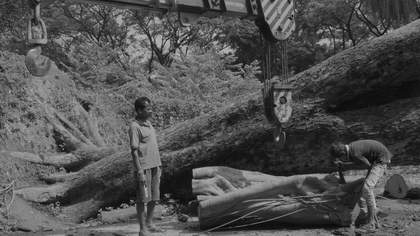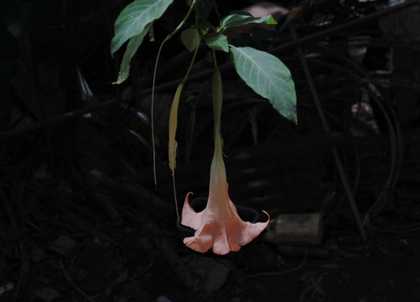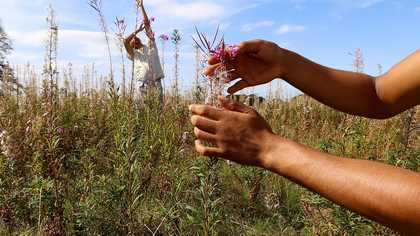Kawchu otherwise known as the crying tree, Papaver somniferum aka opium poppy, Musa — the flower of the banana tree — cacti and lilies are the main protagonists of the films in this programme. In these works, the plants are not products nor objects, but mediators between the past and the present, and between virtual and material realities.
Adrián Balseca’s seemingly minimal silent film The Skin of Labour is loaded with historic and political memories. While evoking the imprint of human kind on nature, it also refers to the rubber extraction slavery and genocides that occurred between 1879 and 1912 in the Ecuadorian, Peruvian, Brazilian and Colombian Amazon.
Jodie Mack’s Wasteland No. 1: Ardent, Verdant reunites computational waste with the plant from which opium, morphine, codeine and heroin are made. In the artist’s words, ’a eulogy for wasted potential sends the out-of-date to the out-of-body: trash to treasure’.
Taking a different approach, Minia Biabiany's Musa addresses colonial violence imposed on women’s bodies and sexualities. Past and present gendered violence also haunts Colectivo Los Ingrávidos’ Coyolxauhqui, a free jazz audiovisual composition in which the cacti of the Tehuacán-Cuicatlán valley seem to be the only witnesses of femicide.
Kent Chan’s Tremors, a film produced at the Calcutta Botanic Garden, unfolds tableaux of visitors who have consented to pose for several minutes. This eerie protocol leads to a durational film recalling botanical and taxonomical monochrome engravings, while re-enacting a trope of early cinema: mise-en-scène with people posing in front of human-made vegetal backdrops, imposing their hierarchical importance.
The programme is bookended with two works by Lawrence Lek. Both are social and ecological speculations that re-imagine other futures from altered pasts. His short video Temple Lily evokes the plant of the same name, which ‘evolved in darkness, and draws on the vibrational energy of sound rather than light’. As if to conjure the ambivalent power of all psychotropic plants and their histories of both bloodshed and medicine, his sonic work Dead Souls images a nightclub thriving after human extinction: ‘a sonic architecture filled only with ghosts’.
Programme
- Lawrence Lek Temple Lily 2020. Digital video, colour, silent, 1 min
- Kent Chan Tremors 2021. Digital video, black and white and colour, sound, 23 min
- Jodie Mack Wasteland No. 1: Ardent, Verdant 2017. 16 mm film, colour, silent, 4 min
- Minia Biabiany Musa 2020. HD video, colour, sound, 14 min, captioned
- Adrián Balseca The Skin of Labour 2016. 16 mm film, black and white, silent, 9 min
- Colectivo Los Ingrávidos, Coyolxauhqui 2017. 16 mm film transferred to HD video, colour, sound
- Lawrence Lek Dead Souls 2020. Audio track 5 min

Kent Chan, Tremors 2021, film still. Courtesy the artist


